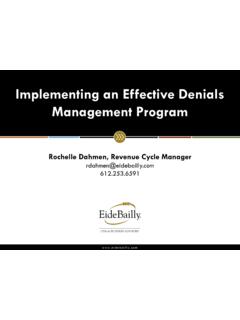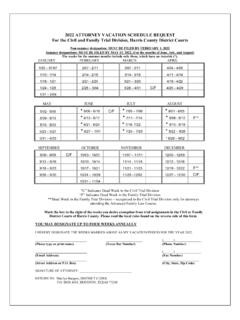Transcription of M 4 S Common Technical Document for the Registration …
1 European Medicines Agency July 2003. CPMP/ICH/2887/99 - Safety ICH Topic M 4 S. Common Technical Document for the Registration of Pharmaceuticals for human Use - Safety Step 5. Common Technical Document FOR THE Registration OF. PHARMACEUTICALS FOR human USE. NONCLINICAL OVERVIEW AND NONCLINICAL SUMMARIES. OF MODULE 2. ORGANISATION OF MODULE 4. (CPMP/ICH/2887/99 - Safety). TRANSMISSION TO CPMP July 2000. RELEASE FOR CONSULTATION July 2000. DEADLINE FOR COMMENTS September 2000. TRANSMISSION TO CPMP FOR INFORMATION November 2000. RELEASE FOR INFORMATION November 2000. NUMBERING AND SECTION HEADERS EDITED FOR September 2002. CONSISTENCY AND USE IN E-CTD AS AGREED BY ICH. STEERING COMMITTEE. TRANSMISSION TO CPMP AND RELEASE FOR INFORMATION February 2003. DATE FOR IMPLEMENTATION July 2003. Note: The sequence of M4 Common Technical Document for the Registration of Pharmaceuticals for human Use is: M4 - Organisation of Common Technical Document M4 Quality - Quality overall summary of Module 2 and Module 3: Quality M4 Safety - Nonclinical Overview and Nonclinical Summaries of Module 2 and Organisation of Module 4.
2 M4 Efficacy - Clinical overview and Clinical summary of Module 2 and Module 5: Clinical Study reports 7 Westferry Circus, Canary Wharf, London, E14 4HB, UK. Tel. (44-20) 74 18 85 75 Fax (44-20) 75 23 70 40. E-mail: EMEA 2006 Reproduction and/or distribution of this Document is authorised for non commercial purposes only provided the EMEA is acknowledged The Document as presented may be subject to further editorial changes and is for information only. Details on how to prepare a submission dossier based on the CTD format including information on the content of Module I are included in the revision of the Notice to Applicants. EMEA 2006 2. ICOMMON Technical Document FOR THE Registration OF. PHARMACEUTICALS FOR human USE: SAFETY. NONCLINICAL OVERVIEW AND NONCLINICAL SUMMARIES OF MODULE 2. ORGANISATION OF MODULE 4.
3 TABLE OF CONTENTS. MODULE 2 : Common Technical Document SUMMARIES ..1. General Principles of Nonclinical Overview and Summaries ..1. NONCLINICAL General Aspects ..5. Content and Structural NONCLINICAL WRITTEN AND TABULATED Nonclinical Written Introduction ..7. General Presentation Pharmacology Written Summary ..8. Brief Summary ..5. Primary Secondary Safety Pharmacology ..6. Pharmacodynamic Drug Discussion and Tables and Figures ..6. Pharmacology Tabulated Summary (see Appendix B) ..9. Pharmacokinetics Written Summary ..9. Brief Summary ..7. Methods of Analysis ..7. Distribution ..7. Metabolism (interspecies comparison) ..7. Excretion ..7. Pharmacokinetic Drug Other Pharmacokinetic Studies ..8. Discussion and Tables and Figures ..8. EMEA 2006 3. Pharmacokinetics Tabulated Summary (see Appendix B) ..11. Toxicology Written Summary.
4 11. Brief Summary ..8. Single-Dose Toxicity ..9. Repeat-Dose Toxicity (including supportive toxicokinetics evaluations) ..9. Carcinogenicity (including supportive toxicokinetics evaluations)..9. Reproductive and Developmental Toxicity (including range-finding studies and supportive toxicokinetics evaluations) ..10. Local Other Toxicity Studies (if available)..10. Discussion and Tables and Figures ..10. Toxicology Tabulated Summary (see Appendix B) ..13. MODULE 4: NONCLINICAL STUDY Table of Contents of Module Study Reports ..13. Literature APPENDIX Examples of Tables and Figures for Written Summaries ..17. APPENDIX The Nonclinical Tabulated Summaries - APPENDIX The Nonclinical Tabulated Summaries - EMEA 2006 4. MODULE 2 : Common Technical Document SUMMARIES. General Principles of Nonclinical Overview and Summaries This guideline provides recommendations for the harmonisation of the Nonclinical Overview, Nonclinical Written Summary, and Nonclinical Tabulated.
5 Summaries. The primary purpose of the Nonclinical Written and Tabulated Summaries should be to provide a comprehensive factual synopsis of the nonclinical data. The interpretation of the data, the clinical relevance of the findings, cross-linking with the quality aspects of the pharmaceutical , and the implications of the nonclinical findings for the safe use of the pharmaceutical ( , as applicable to labeling) should be addressed in the Overview. NONCLINICAL OVERVIEW. The Nonclinical Overview should provide an integrated overall analysis of the information in the Common Technical Document . In general, the Nonclinical Overview should not exceed about 30 pages. General Aspects The Nonclinical Overview should present an integrated and critical assessment of the pharmacologic, pharmacokinetic, and toxicologic evaluation of the pharmaceutical .
6 Where relevant guidelines on the conduct of studies exist, these should be taken into consideration, and any deviation from these guidelines should be discussed and justified. The nonclinical testing strategy should be discussed and justified. There should be comment on the GLP. status of the studies submitted. Any association between nonclinical findings and the quality characteristics of the human pharmaceutical , the results of clinical trials, or effects seen with related products should be indicated, as appropriate. Except for biotechnology-derived products, an assessment of the impurities and degradants present in the drug substance and product should be included along with what is known of their potential pharmacologic and toxicologic effects. This assessment should form part of the justification for proposed impurity limits in the drug substance and product, and be appropriately cross-referenced to the quality documentation.
7 The implications of any differences in the chirality, chemical form, and impurity profile between the compound used in the nonclinical studies and the product to be marketed should be discussed. For biotechnology-derived products, comparability of material used in nonclinical studies, clinical studies, and proposed for marketing should be assessed. If a drug product includes a novel excipient, an assessment of the information regarding its safety should be provided. Relevant scientific literature and the properties of related products should be taken into account. If detailed references to published scientific literature are to be used in place of studies conducted by the applicant, this should be supported by an appropriate justification that reviews the design of the studies and any deviations from available guidelines.
8 In addition, the availability of information on the quality of batches of drug substance used in these referenced studies should be discussed. The Nonclinical Overview should contain appropriate reference citations to the Tabulated Summaries, in the following format: (Table , Study/Report Number). Content and Structural Format The Nonclinical Overview should be presented in the following sequence: Overview of the nonclinical testing strategy Pharmacology Pharmacokinetics EMEA 2006 5. Toxicology Integrated overview and conclusions List of literature references Studies conducted to establish the pharmacodynamic effects, the mode of action, and potential side effects should be evaluated and consideration should be given to the significance of any issues that arise. The assessment of the pharmacokinetic, toxicokinetic, and metabolism data should address the relevance of the analytical methods used, the pharmacokinetic models, and the derived parameters.
9 It might be appropriate to cross-refer to more detailed consideration of certain issues within the pharmacology or toxicology studies ( impact of the disease states, changes in physiology, anti-product antibodies, cross-species consideration of toxicokinetic data). Inconsistencies in the data should be discussed. Inter-species comparisons of metabolism and systemic exposure comparisons in animals and humans (AUC, Cmax, and other appropriate parameters) should be discussed and the limitations and utility of the nonclinical studies for prediction of potential adverse effects in humans highlighted. The onset, severity, and duration of the toxic effects, their dose-dependency and degree of reversibility (or irreversibility), and species- or gender-related differences should be evaluated and important features discussed, particularly with regard to.
10 Pharmacodynamics toxic signs causes of death pathologic findings genotoxic activity - the chemical structure of the compound, its mode of action, and its relationship to known genotoxic compounds carcinogenic potential in the context of the chemical structure of the compound, its relationship to known carcinogens, its genotoxic potential, and the exposure data the carcinogenic risk to humans - if epidemiologic data are available, they should be taken into account fertility, embryofetal development, pre-and post-natal toxicity studies in juvenile animals the consequences of use before and during pregnancy, during lactation, and during pediatric development local tolerance other toxicity studies/ studies to clarify special problems The evaluation of toxicology studies should be arranged in a logical order so that all relevant data elucidating a certain effect / phenomenon are brought together.












